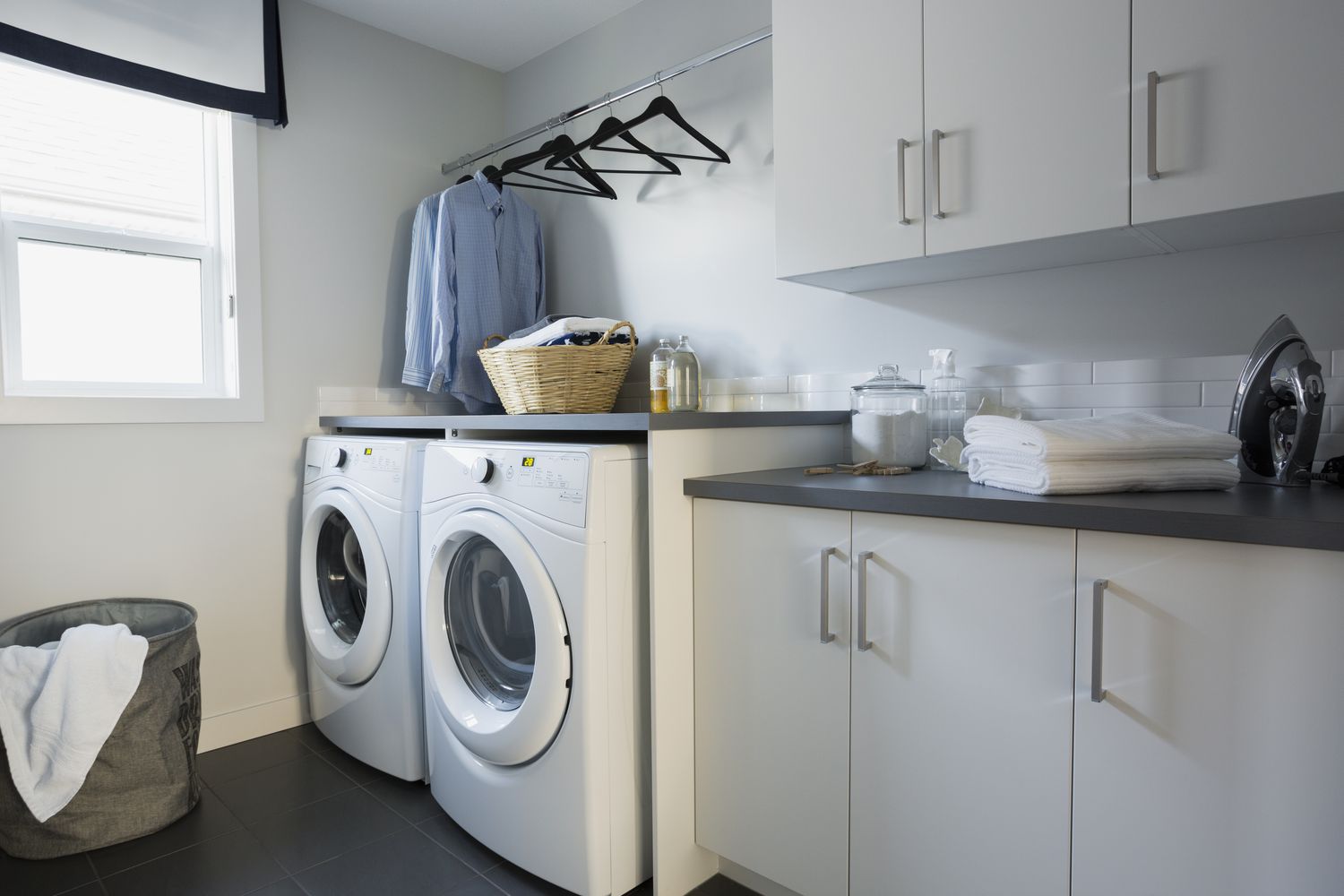

Articles
Where Should The Laundry Room Be Located
Modified: February 29, 2024
Discover the ideal location for your laundry room with our informative articles. Find expert tips and advice on where to place your laundry room to maximize convenience and functionality.
(Many of the links in this article redirect to a specific reviewed product. Your purchase of these products through affiliate links helps to generate commission for Storables.com, at no extra cost. Learn more)
Introduction
When designing or renovating a home, one important consideration is the location of the laundry room. Many homeowners may overlook this decision, but it can have a significant impact on the functionality and convenience of daily chores. The laundry room is a space where clothes are washed, dried, and folded, and having it in the right location can make these tasks much more efficient.
There are several factors to consider when determining where to locate the laundry room. These factors include the layout of the house, the plumbing and electrical connections, the floor plan, and the needs and preferences of the homeowners. Each option – be it on the ground floor, upper floors, in the basement, or in a closet or small space – has its own advantages and disadvantages.
In this article, we will explore the pros and cons of each possible location for the laundry room. By understanding the considerations involved, homeowners can make an informed decision about where to position their laundry facilities.
Key Takeaways:
- Consider the specific needs and constraints of your household when choosing the location of your laundry room. Whether it’s on the ground floor, upper floors, in the basement, or in a closet, each option has its own advantages and considerations to weigh.
- Carefully evaluate the pros and cons of each location option to make an informed decision that enhances the functionality, convenience, and overall enjoyment of your laundry routine. Thoughtful design and planning can address potential drawbacks and create an efficient and pleasant laundry space.
Read more: Where Should Dining Room Be Located
Considerations for Locating the Laundry Room
Before deciding on the location of the laundry room, it is essential to consider a few key factors. Firstly, the proximity to bedrooms and main living areas is significant. Placing the laundry room near bedrooms can be convenient since it reduces the need to carry heavy loads of laundry up and down stairs. However, if the laundry room is too close to bedrooms, noise from the machines may disturb occupants during laundry cycles.
Secondly, evaluate the plumbing and electrical requirements. Locating the laundry room close to existing plumbing and electrical connections can help reduce installation costs. Additionally, check if the space has proper ventilation and access to utilities, such as a floor drain, to accommodate washing machines and dryers.
The layout of the house also influences the preferred location of the laundry room. Some homes have dedicated laundry rooms or laundry closets, while others may have to optimize space by integrating the laundry facilities within other areas, such as the bathroom or kitchen.
Lastly, consider the lifestyle and preferences of the homeowners. For instance, families with children may find it beneficial to have the laundry room on the same floor as the bedrooms to simplify the process of laundering their clothes. Additionally, individuals who regularly entertain guests may prefer a more discreet laundry room location away from main gathering areas.
By taking these considerations into account, homeowners can narrow down their options and choose the most suitable location for their laundry room. Let’s now explore the pros and cons of different locations: on the ground floor, on the upper floors, in the basement, or in a closet or small space.
Locating the Laundry Room on the Ground Floor
One common location for the laundry room is on the ground floor, typically near the main living areas or the garage. This placement offers several advantages that make doing laundry more convenient.
Firstly, having the laundry room on the ground floor eliminates the need to carry heavy loads of laundry up or down stairs. It saves time and effort, especially for individuals with mobility limitations or for families with young children who may struggle with heavy loads.
Furthermore, placing the laundry room on the ground floor allows for easy access to outdoor areas, such as a backyard or patio. This is especially beneficial when doing tasks like washing muddy sports equipment or hanging clothes to dry outdoors. It eliminates the need to transport laundry up or down stairs, reducing the risk of accidents or spills.
Another advantage of having the laundry room on the ground floor is that it can be conveniently located near utility connections, such as water and electricity. This can minimize construction and installation costs, as the necessary connections are already accessible in close proximity.
However, there are also some considerations to keep in mind when locating the laundry room on the ground floor. One potential drawback is the noise generated by washing machines and dryers. If the laundry room is situated near main living areas, such as the kitchen or living room, the noise can be disruptive to daily activities and conversations. To mitigate this issue, it is essential to invest in high-quality appliances with noise reduction features or consider soundproofing the laundry room walls.
In addition, if the home is multi-level, there may be limitations on available space on the ground floor. Allocating a significant portion of the ground floor to accommodate the laundry room may impact other living areas or result in a smaller overall floor plan.
Overall, locating the laundry room on the ground floor provides convenience and accessibility, particularly for those who prefer to avoid stairs when carrying heavy loads. However, it is important to address potential noise concerns and ensure sufficient space is available without compromising the functionality of the ground floor.
Pros of Having the Laundry Room on the Ground Floor
Locating the laundry room on the ground floor offers several advantages that can greatly enhance the functionality and convenience of daily laundry tasks.
1. Accessibility: Having the laundry room on the ground floor eliminates the need to navigate stairs when carrying heavy loads of laundry. This is especially beneficial for individuals with mobility issues or families with young children who may struggle with heavy loads. The ease of access saves time and effort, making laundry chores less daunting.
2. Outdoor Access: Placing the laundry room on the ground floor allows for easy access to outdoor areas such as a backyard or patio. This becomes particularly advantageous when washing items like muddy sports equipment or hanging clothes to dry in the fresh air. It eliminates the need to transport laundry up or down stairs, reducing the risk of accidents or spills.
3. Proximity to Living Areas: When the laundry room is located on the ground floor, it can be conveniently situated near main living areas. This makes it easier to multitask and attend to other household chores while doing laundry. It allows homeowners to keep an eye on the washing and drying cycles without having to constantly run up and down stairs.
4. Utility Connections: Ground floor laundry rooms can often be positioned near utility connections, such as water and electricity. This proximity reduces the need for extensive plumbing and electrical work during installation, ultimately saving time and money. Additionally, it provides easier access for maintenance and repairs in the future.
5. Multi-Functional Space: Depending on the available square footage, a ground floor laundry room can often serve multiple purposes. It can double as a mudroom or storage area for cleaning supplies, linens, and other household items. This maximizes the utility and efficiency of the space, creating a more organized and functional home environment.
6. Resale Value: A ground floor laundry room is a desirable feature for many homebuyers. Having this convenience can potentially increase the resale value of the property. It is considered a valuable amenity that appeals to a wide range of individuals and families who prioritize ease of use and accessibility.
Overall, locating the laundry room on the ground floor brings numerous benefits, including improved accessibility, outdoor access, and proximity to living areas. It also offers the advantage of utility connections and the potential for a multi-functional space. Considering these pros can help homeowners make an informed decision when determining the optimal location for their laundry room.
Cons of Having the Laundry Room on the Ground Floor
While there are many advantages to having the laundry room on the ground floor, it is important to consider the potential drawbacks that may arise from this location.
1. Noise: One of the main concerns of a ground floor laundry room is the noise generated by washing machines and dryers. If the laundry room is situated near main living areas such as the kitchen, living room, or bedrooms, the noise can be disruptive to daily activities and conversations. This can be especially problematic for households with individuals who are sensitive to noise or for those who prefer a quieter living environment.
2. Space Limitations: Depending on the layout and size of the house, allocating a significant portion of the ground floor to accommodate the laundry room may impact the available space for other essential areas, such as the kitchen, dining room, or living room. This can result in a smaller overall floor plan or compromise the functionality and flow of the ground floor.
3. Views and Aesthetics: In some cases, placing the laundry room on the ground floor may hinder the view or aesthetics of the living spaces. If the laundry room is positioned near windows or in open areas, it may obstruct natural light and hinder the visual appeal of the space. This is especially relevant in homes with architectural features or scenic views that are better preserved without the presence of laundry appliances and supplies.
4. Accessibility for Upper Floors: While having the laundry room on the ground floor is convenient for those utilizing the ground floor, it may pose challenges for individuals who predominantly reside or spend time on the upper floors of the house. Carrying laundry up and down stairs can become cumbersome and time-consuming, particularly for larger households or individuals with physical limitations.
5. Disruption to Privacy: Placing the laundry room on the ground floor might expose occupants to noise and potential interruptions from guests or visitors. This can be a concern for individuals who value privacy or for families who frequently entertain guests in their main living areas.
It is important to weigh these cons against the benefits when considering the location of the laundry room on the ground floor. Addressing potential noise concerns through appliance selection and soundproofing measures can help mitigate any disruptions. Additionally, thoughtful space planning and design can minimize the impact on aesthetics and views, ensuring a harmonious integration of the laundry room with the overall living spaces.
Ultimately, homeowners must assess their priorities, lifestyle, and specific needs to determine if the advantages of a ground floor laundry room outweigh the potential drawbacks.
Read more: Where Should A Plumbing Vent Be Located?
Locating the Laundry Room on the Upper Floors
While the ground floor is a popular choice for a laundry room, another option to consider is locating it on the upper floors of the house. This placement offers a set of unique advantages and considerations.
One of the main benefits of having the laundry room on the upper floors is the proximity to the bedrooms. Placing it near the bedrooms makes it easier to access and attend to laundry needs without the need to navigate stairs. This can be particularly advantageous for individuals with limited mobility, families with young children, or those who prefer convenience and efficiency.
Furthermore, having the laundry room on the upper floors reduces the noise impact on main living areas. The sound generated by the washing machines and dryers is confined to the upper portion of the house, minimizing disruptions to daily activities, conversations, and relaxation in the ground floor living spaces.
Another advantage is the potential for strategic laundry chute placement. With a laundry chute, dirty clothes can be easily dropped from various rooms in the house directly into the laundry room, eliminating the need to carry laundry throughout the house. This can significantly streamline the laundry process, especially in multi-level homes with multiple bedrooms.
On the other hand, there are some considerations to be aware of when contemplating an upper floor laundry room. One potential challenge is the installation and routing of the necessary plumbing and electrical connections. It may require additional planning and construction to ensure adequate access to plumbing fixtures and power sources, which can increase the overall project cost.
In addition, carrying heavy loads of laundry up and down stairs can be physically demanding, especially for individuals with mobility limitations or for families with young children. Homeowners must consider their own physical abilities and assess whether the added convenience of having the laundry room on the upper floors outweighs the potential difficulty of transportation.
Lastly, there may be space limitations on the upper floors, especially in compact homes or apartments. Allocating a dedicated laundry room or creating space for laundry appliances within existing rooms may require creative design solutions to optimize available square footage without compromising the functionality and flow of the upper floor spaces.
By carefully considering the advantages and potential challenges of locating the laundry room on the upper floors, homeowners can determine if this option aligns with their lifestyle, preferences, and the specific layout of their home.
Pros of Having the Laundry Room on the Upper Floors
Opting to locate the laundry room on the upper floors of a house brings several advantages that can greatly enhance the functionality and convenience of the laundry process. Here are some of the key pros:
1. Proximity to Bedrooms: Placing the laundry room on the upper floors brings ease of access and convenience, particularly for individuals or families who primarily reside on those levels. Having the laundry facilities close to the bedrooms reduces the need to navigate stairs when collecting dirty laundry or putting away clean clothes, saving time and effort.
2. Noise Reduction: By positioning the laundry room on the upper floors, the noise generated by washing machines and dryers is confined to that area. This can be especially favorable for households with main living areas located on the ground floor, as it minimizes disruptions to daily activities, conversations, and relaxation in those spaces.
3. Laundry Chute Potential: Locating the laundry room on the upper floors opens up the possibility of incorporating a laundry chute. A laundry chute allows dirty clothes to be easily dropped from different rooms directly into the laundry room. This can significantly streamline the laundry process, eliminating the need to carry laundry throughout the house and saving time and effort.
4. Efficient Space Utilization: In homes with limited square footage, having the laundry room on the upper floors allows for efficient use of available space. The laundry facilities can be integrated into existing rooms such as a bathroom or a hallway closet, maximizing the functionality of the space without the need for a dedicated laundry room. This can be particularly advantageous in apartment living or smaller homes.
5. Convenience for Multi-Story Homes: For multi-story homes, having a laundry room on the upper floors can save time and physical exertion. Carrying heavy loads of laundry up and down stairs can be physically demanding, and having the laundry facilities on the same level as the bedrooms reduces the need for multiple trips, making the laundry process more efficient.
6. Increased Privacy: Placing the laundry room on the upper floors can provide added privacy, especially when it comes to sorting and folding clothes. It allows for laundry tasks to be carried out away from the main living areas, giving individuals a quiet and separate space to focus on these tasks without interruptions.
When considering the advantages of having the laundry room on the upper floors, it is important to weigh these pros against any potential challenges, such as space limitations or the need for additional plumbing and electrical work. By carefully assessing the specific needs and preferences of the household, homeowners can make an informed decision regarding the optimal location for their laundry room.
Cons of Having the Laundry Room on the Upper Floors
While there are numerous benefits to locating the laundry room on the upper floors of a house, there are also some potential drawbacks that should be considered. Here are some cons to keep in mind:
1. Installation Challenges: Moving the laundry room to the upper floors can pose challenges in terms of installation and plumbing. Routing plumbing lines and drainage to the upper floors may require additional construction work, resulting in increased time and costs. It is essential to consult with professionals to ensure proper installation and compliance with building codes and regulations.
2. Space Limitations: Depending on the layout and size of the house, the upper floors may have limited available space for a dedicated laundry room. This can make it challenging to accommodate full-sized appliances, storage for laundry supplies, and folding space. Creative design solutions may be required to optimize space utilization and ensure a functional laundry area without compromising the flow and functionality of the upper floor.
3. Physical Exertion: Carrying heavy loads of laundry up and down stairs can be physically demanding, especially for individuals with mobility issues or in households with multiple levels. This can create challenges and potential safety hazards, particularly when handling bulky or heavy items like bedding or rugs. Homeowners must assess their physical capabilities and consider the potential strain of transporting laundry between floors.
4. Noise Disruption: Locating the laundry room on the upper floors can result in increased noise disruption to the bedrooms or areas directly adjacent to the laundry room. The sound generated by washing machines and dryers may be more noticeable and potentially disruptive to individuals seeking a quieter living environment.
5. Accessibility for Other Floors: Placing the laundry room on the upper floors may pose challenges for individuals who primarily reside or spend time on lower floors. Carrying laundry up and down stairs can prove cumbersome and time-consuming, particularly for larger households or individuals with limited mobility. It is important to evaluate how the location of the laundry room will impact accessibility and convenience for all residents.
6. Potential Damage Risks: In the event of a plumbing or appliance malfunction, having the laundry room on the upper floors increases the risk of water damage to lower levels. Water leaks or spills have the potential to seep through floors and cause costly damage to ceilings, walls, or flooring. Proper maintenance and prompt repairs are crucial to minimize such risks.
Overall, the decision to have the laundry room on the upper floors requires careful consideration of the installation challenges, space limitations, physical exertion, potential noise disruption, and accessibility for other floors. By weighing these cons against the advantages, homeowners can make an informed decision about the most suitable location for their laundry facilities.
When deciding on the location of your laundry room, consider placing it near the bedrooms to make it more convenient for carrying and sorting laundry. This can save time and effort when doing laundry regularly.
Locating the Laundry Room in the Basement
When considering the location of the laundry room in a home, one option worth exploring is placing it in the basement. This choice offers a different set of advantages and considerations compared to other potential locations.
One of the main benefits of having the laundry room in the basement is the abundance of available space. Basements often provide ample room to create a dedicated laundry area without compromising the functionality of other living spaces in the house. This can include space for full-sized washing machines, dryers, storage for laundry supplies, and even additional folding or ironing areas.
Furthermore, locating the laundry room in the basement can help contain the noise and potential disruptions associated with laundry appliances. Being tucked away in the lower level of the house, the noise generated by washing machines and dryers is less likely to disturb daily activities or conversations in the main living areas.
In addition, placing the laundry room in the basement can provide a convenient central location for laundry management. It allows for easy accessibility from various parts of the house, making it efficient to transport dirty laundry to the basement and return clean clothes to their respective rooms or storage areas.
However, there are some considerations to keep in mind when contemplating a basement laundry room. One potential challenge is the need for proper ventilation and lighting in the basement area. Adequate ventilation is essential to prevent musty odors or moisture buildup, while ample lighting is necessary for a safe and comfortable working environment.
Another aspect to consider is the potential inconvenience of carrying heavy loads of laundry up and down the stairs. This can pose difficulties for individuals with physical limitations or families with young children. Installing laundry shoots or implementing a system to transport laundry between floors can help alleviate this concern and streamline the process.
Lastly, the basement location may not be ideal for individuals who desire a laundry room that is more easily accessible from bedrooms or main living areas. A basement laundry room might involve additional effort and time to reach, particularly for individuals who primarily reside or spend most of their time in other parts of the house.
Overall, locating the laundry room in the basement offers the advantage of ample space, noise isolation, and central accessibility. However, homeowners should consider factors such as ventilation, lighting, transportation of laundry, and convenience in relation to their specific needs and preferences.
Pros of Having the Laundry Room in the Basement
Choosing to locate the laundry room in the basement of a house brings several advantages that can greatly enhance the functionality and efficiency of laundry tasks. Here are some of the key pros to consider:
1. Abundance of Space: The basement typically offers ample space for creating a dedicated laundry area. This allows for the inclusion of full-sized washing machines, dryers, laundry sinks, and additional storage or folding areas. The extra space provides more flexibility in terms of organization and accommodating larger laundry loads.
2. Noise Containment: Placing the laundry room in the basement helps contain the noise generated by washing machines and dryers. The lower level location reduces potential disruptions to daily activities in the main living areas of the home. This can be especially advantageous for households with individuals who are sensitive to noise or value a quieter living environment.
3. Central Location: The basement location can serve as a convenient central hub for laundry management. With laundry facilities located in the basement, it becomes easier to transport dirty laundry from various parts of the house to one central area. This centralization facilitates sorting, washing, and folding, making the laundry process more efficient.
4. Flexibility in Design: The basement offers more flexibility when it comes to designing the laundry room to meet specific needs. There is room to incorporate additional features such as utility sinks, ironing stations, or custom storage solutions. This flexibility allows homeowners to create a laundry space tailored to their unique requirements, making the laundry routine more organized and streamlined.
5. Concealment of Mess: Having the laundry room in the basement can help keep the mess and visual clutter of laundry activities out of sight from the main living areas. This can contribute to a cleaner and more visually appealing environment. It also allows homeowners to focus on maintaining a tidy and orderly living space upstairs, separate from the laundry operations downstairs.
6. Potential Multi-Purpose Space: As the basement often provides more square footage, there is an opportunity to use the space for multiple purposes. In addition to housing the laundry facilities, the basement can serve as a storage area, a home gym, a home office, or even a recreation room. This maximizes the utility and functionality of the basement area, offering more than just a dedicated laundry space.
It’s important to weigh these pros against any potential challenges associated with basement laundry rooms, such as adequate ventilation, lighting, and the need to transport laundry up and down stairs. By considering specific needs, preferences, and the layout of the house, homeowners can determine if a basement laundry room is the right choice for them.
Cons of Having the Laundry Room in the Basement
While there are many advantages to having the laundry room in the basement of a house, there are also some potential drawbacks that should be considered. Here are some cons to keep in mind:
1. Limited Accessibility: Placing the laundry room in the basement may not be convenient for individuals who primarily reside or spend most of their time on upper levels of the house. Carrying laundry up and down stairs can be physically demanding, particularly for individuals with mobility limitations or families with young children. Consideration should be given to the potential inconvenience of accessing the laundry facilities in the basement.
2. Ventilation and Lighting: Basements often have limited natural light and ventilation, which can pose challenges in creating a comfortable and functional laundry space. Proper ventilation is crucial to prevent musty odors and moisture buildup, while sufficient lighting is essential for a safe and well-illuminated workspace. Additional measures such as installing ventilation systems and artificial lighting may be necessary to address these concerns.
3. Plumbing and Utility Considerations: Locating the laundry room in the basement may require additional plumbing and utility considerations. It may involve routing plumbing lines and drainage to the basement, which could require construction work and increase costs. Ensuring proper access to water supply, drainage systems, and electrical connections is essential to maintain the functionality and efficiency of the laundry facilities.
4. Potential for Flooding: Basements are more susceptible to flooding compared to other areas of the house. Water leaks or basement flooding can cause significant damage to laundry appliances and supplies. Homeowners should implement measures such as proper sealing, sump pumps, and waterproofing to minimize the risk of water damage and safeguard the laundry room in the basement.
5. Limited Natural Light: Basements typically have limited access to natural light due to their below-ground location. This can create a dim and potentially less appealing ambiance for the laundry room. However, installing artificial lighting solutions can help compensate for the lack of natural light, ensuring a well-lit and functional laundry space.
6. Deterioration of Clothes: In some cases, basements may be prone to higher humidity levels, which can affect the condition of clothes stored in the laundry room. High humidity can lead to musty smells, mold growth, or damage to fabrics. To mitigate this risk, it is important to implement proper ventilation, dehumidification, and storage practices to maintain optimal humidity levels and preserve the quality of clothing.
It is crucial to weigh these cons against the advantages of having a laundry room in the basement. Consider the specific needs, preferences, and potential challenges of the household to determine if the benefits outweigh the drawbacks. Additionally, consulting with professionals can provide guidance on addressing these concerns and ensuring a functional and efficient basement laundry room.
Locating the Laundry Room in a Closet or Small Space
When space is limited in a home, locating the laundry room in a closet or small space is a practical solution. This option offers a compact and efficient laundry area that maximizes available square footage. Here are some key considerations and benefits of having a laundry room in a closet or small space:
1. Space Optimization: One of the primary advantages of locating the laundry room in a closet or small space is the efficient use of available square footage. This approach allows homeowners to make the most of limited space, especially in apartments, townhouses, or smaller homes. By repurposing a closet or small area, it is possible to create a functional and dedicated laundry space.
2. Convenience and Accessibility: Having the laundry facilities contained within a closet or small space provides convenience and accessibility. The laundry room is often situated near bedrooms or main living areas, reducing the need to travel to a separate location to do laundry. This proximity streamlines the laundry process and saves time and effort, particularly for individuals or families with busy schedules.
3. Minimal Noise Disruption: Locating the laundry room in a closet or small space can help contain and minimize the noise generated by washing machines and dryers. The walls of a closet or small area can help muffle the sound, making it less likely to disturb residents or adjacent living areas. This is particularly advantageous in homes where peace and quiet are valued.
4. Space Multi-functionality: Incorporating the laundry room into a closet or small space allows for multi-functionality in the home. The space can be designed to serve a dual purpose, such as combining the laundry room with a storage area or pantry. This approach maximizes the utility of the available space, providing a practical solution for households with limited square footage.
5. Seamless Integration: Locating the laundry room in a closet or small space allows for seamless integration into the overall design and aesthetics of the home. With the doors closed, the laundry area remains hidden and blended with the surrounding environment. This can contribute to a clean and uncluttered appearance, enhancing the overall visual appeal of the living space.
6. Cost Savings: Creating a laundry room in a closet or small space can be cost-effective compared to larger-scale renovations or remodeling projects. Utilizing an existing closet or small area minimizes the need for additional construction or plumbing work, potentially saving time and money in the process.
While locating the laundry room in a closet or small space offers numerous benefits, there are some considerations to keep in mind. It is crucial to ensure adequate ventilation and ventilation in the confined space to prevent musty odors, moisture buildup, and potential damage to the appliances and surrounding area. Sufficient lighting is also essential to create a well-lit and functional laundry area.
By carefully evaluating the available space, considering ventilation and lighting requirements, and maximizing functionality, homeowners can create a highly efficient laundry room within a closet or small space.
Pros of Having a Laundry Room in a Closet or Small Space
Opting to have a laundry room in a closet or small space offers several advantages, especially in homes where space is limited. Here are some key pros to consider:
1. Space Optimization: Creating a laundry room in a closet or small space allows for efficient use of available square footage. It maximizes the functionality of the area, making the most of limited space in apartments, townhouses, or smaller homes. This approach enables homeowners to have a dedicated laundry area without sacrificing valuable living space.
2. Convenience and Accessibility: Having the laundry room contained within a closet or small space provides convenience and accessibility. When the laundry facilities are located near bedrooms or main living areas, they are easily accessible for residents. This proximity streamlines the laundry process and saves time and effort, particularly for individuals or families with busy schedules.
3. Noise Containment: Locating the laundry room in a closet or small space can help muffle the noise generated by washing machines and dryers. The walls and door of the closet or small space act as sound barriers, reducing noise disruption to other areas of the home. This is especially advantageous in homes where peace and quiet are valued.
4. Multi-functionality: The flexibility of incorporating the laundry room into a closet or small space allows for multi-functionality within the home. The space can serve a dual purpose and be utilized for storage, such as housing cleaning supplies, linens, or other household items. This functionality maximizes the utility of the space and optimizes overall organization within the home.
5. Integration with Aesthetics: Creating a laundry room in a closet or small space allows for seamless integration into the design and aesthetics of the home. With the doors closed, the laundry area remains hidden and blends with the surrounding environment, maintaining a clean and uncluttered appearance. This enhances the overall visual appeal and cohesion of the living space.
6. Cost-effective Solution: Utilizing an existing closet or small space to create a laundry room can be a cost-effective solution compared to larger-scale renovations or remodeling projects. The need for additional construction, plumbing work, or the creation of new spaces is minimized, potentially saving time and money.
While having a laundry room in a closet or small space offers many benefits, there are certain considerations to keep in mind. Adequate ventilation is essential to prevent musty odors or moisture buildup in the confined space. Sufficient lighting is also important to create a well-lit and functional laundry area.
Overall, having a laundry room in a closet or small space is a practical and efficient solution, particularly in homes where space is at a premium. It offers convenience, optimal use of available square footage, noise containment, multi-functionality, integration with home aesthetics, and potential cost savings.
Read more: Where To Buy Cabinets For Laundry Room
Cons of Having a Laundry Room in a Closet or Small Space
While there are numerous advantages to having a laundry room in a closet or small space, it is important to consider the potential drawbacks that may arise from this location. Here are some cons to keep in mind:
1. Limited Space: The primary drawback of having a laundry room in a closet or small space is the inherent limitation of available space. This can pose challenges in terms of storage for laundry supplies, sorting and folding areas, or accommodating larger washing machines or dryers. It may require careful organization and space-saving solutions to maximize functionality within the confined area.
2. Lack of Ventilation: A common concern with having a laundry room in a closet or small space is the potential lack of proper ventilation. Without adequate airflow, there is an increased risk of musty odors, mold, or mildew growth. It is essential to ensure sufficient ventilation to maintain a fresh and odor-free laundry environment, potentially requiring the installation of exhaust fans or ventilation systems.
3. Limited Accessibility: The compact nature of a laundry room in a closet or small space may not be suitable for individuals with mobility limitations. The confined area could make it challenging to maneuver comfortably or access laundry appliances and supplies. Consideration should be given to the needs of all household members to ensure accessibility and ease of use.
4. Noise and Disturbance: The proximity of a laundry room in a closet or small space to other living areas can result in increased noise and disturbances. This can be particularly evident when operating washing machines and dryers, which may generate vibrations or loud sounds. In close proximity to bedrooms or main living areas, these noises can potentially disrupt sleep or daily activities, depending on the household’s preferences and sensitivities.
5. Limited Expansion Capability: Since a laundry room in a closet or small space is designed within existing boundaries, there is limited room for expansion or future growth. This may restrict the ability to upgrade or accommodate additional laundry appliances if the household’s needs change over time. It is important to consider long-term requirements and assess if the available space will be sufficient in the future.
6. Aesthetics and Resale Value: Having a laundry room in a closet or small space can impact the overall aesthetics and resale value of the home. If not properly designed and integrated, it may appear cluttered or cramped, potentially detracting from the visual appeal of the space. When considering resale value, some buyers may prefer a larger, more dedicated laundry area rather than a smaller, multi-purpose space.
It is important to carefully evaluate the limitations of having a laundry room in a closet or small space against the benefits it offers. Attention to organization, ventilation, accessibility, noise control, and long-term needs can help mitigate the potential drawbacks and create a functional and efficient laundry area within a limited area.
Conclusion
Choosing the right location for the laundry room is an important decision when designing or renovating a home. Whether it’s on the ground floor, upper floors, in the basement, or in a closet or small space, each option has its own advantages and considerations.
Locating the laundry room on the ground floor provides convenient access, eliminates the need to navigate stairs, and allows for easy outdoor access. However, noise disruption and potential space limitations should be taken into account.
Having the laundry room on the upper floors brings proximity to bedrooms, reduces noise disturbance, and offers centralized laundry management. However, installation challenges, physical exertion, and limited accessibility for other floors should be considered.
Placing the laundry room in the basement offers ample space, noise containment, and potential multi-functionality. However, ventilation and lighting concerns, potential flooding risks, as well as limited accessibility, should be carefully evaluated.
Creating a laundry room in a closet or small space optimizes available square footage, provides convenience and accessibility, and allows for multi-functionality. However, limitations in space, ventilation, noise containment, and potential impact on aesthetics should be taken into account.
In conclusion, the ideal location for the laundry room will depend on the specific needs, preferences, and constraints of each homeowner. It is essential to carefully consider the advantages and disadvantages of each location option and address any potential drawbacks through thoughtful design, planning, and appropriate solutions.
By weighing the pros and cons of different locations, homeowners can make an informed decision that enhances the functionality, convenience, and overall enjoyment of their laundry routine. Regardless of the chosen location, a well-designed and organized laundry space can transform the daily chore into a more efficient and pleasant experience for everyone in the household.
Frequently Asked Questions about Where Should The Laundry Room Be Located
Was this page helpful?
At Storables.com, we guarantee accurate and reliable information. Our content, validated by Expert Board Contributors, is crafted following stringent Editorial Policies. We're committed to providing you with well-researched, expert-backed insights for all your informational needs.
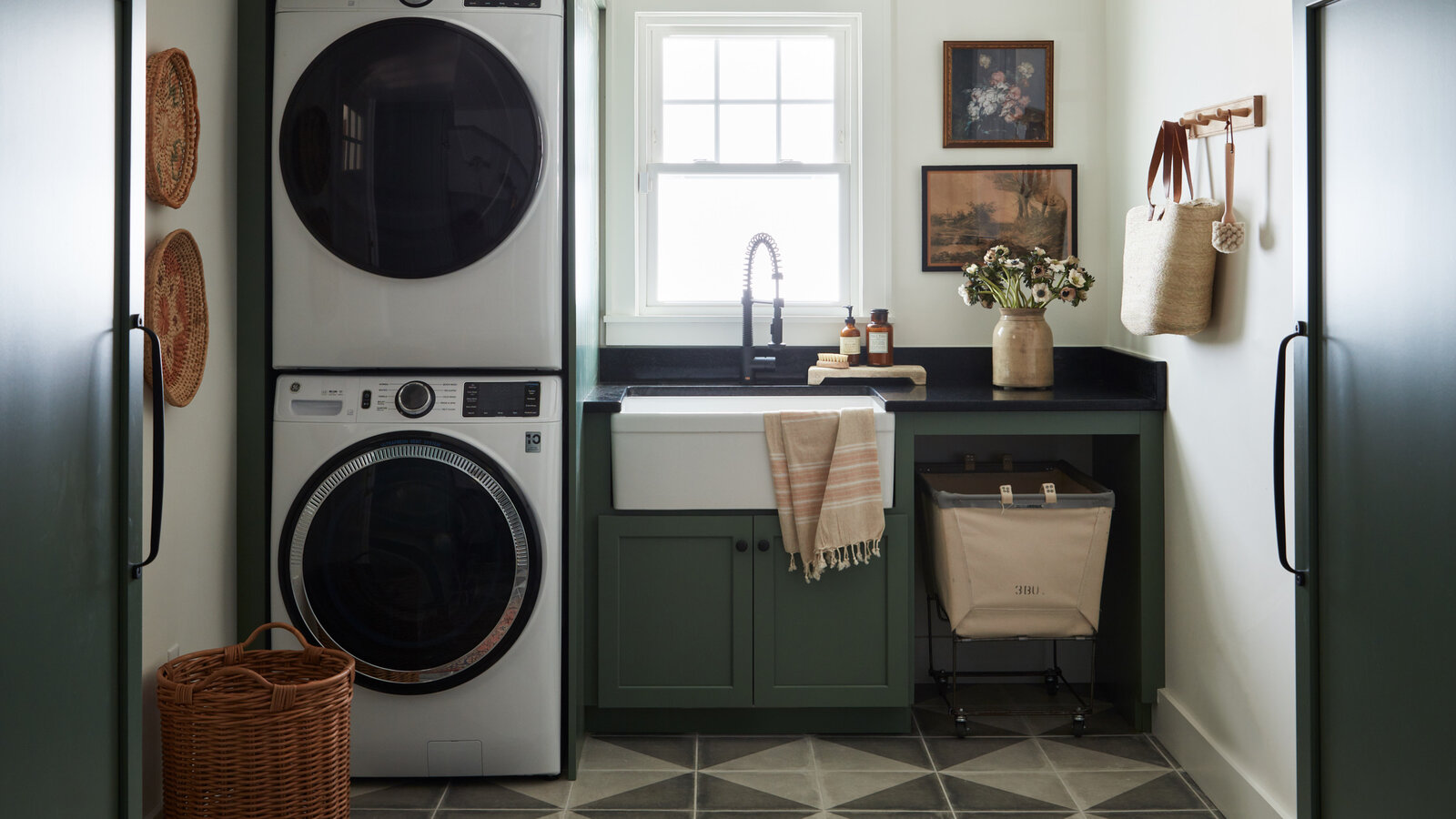
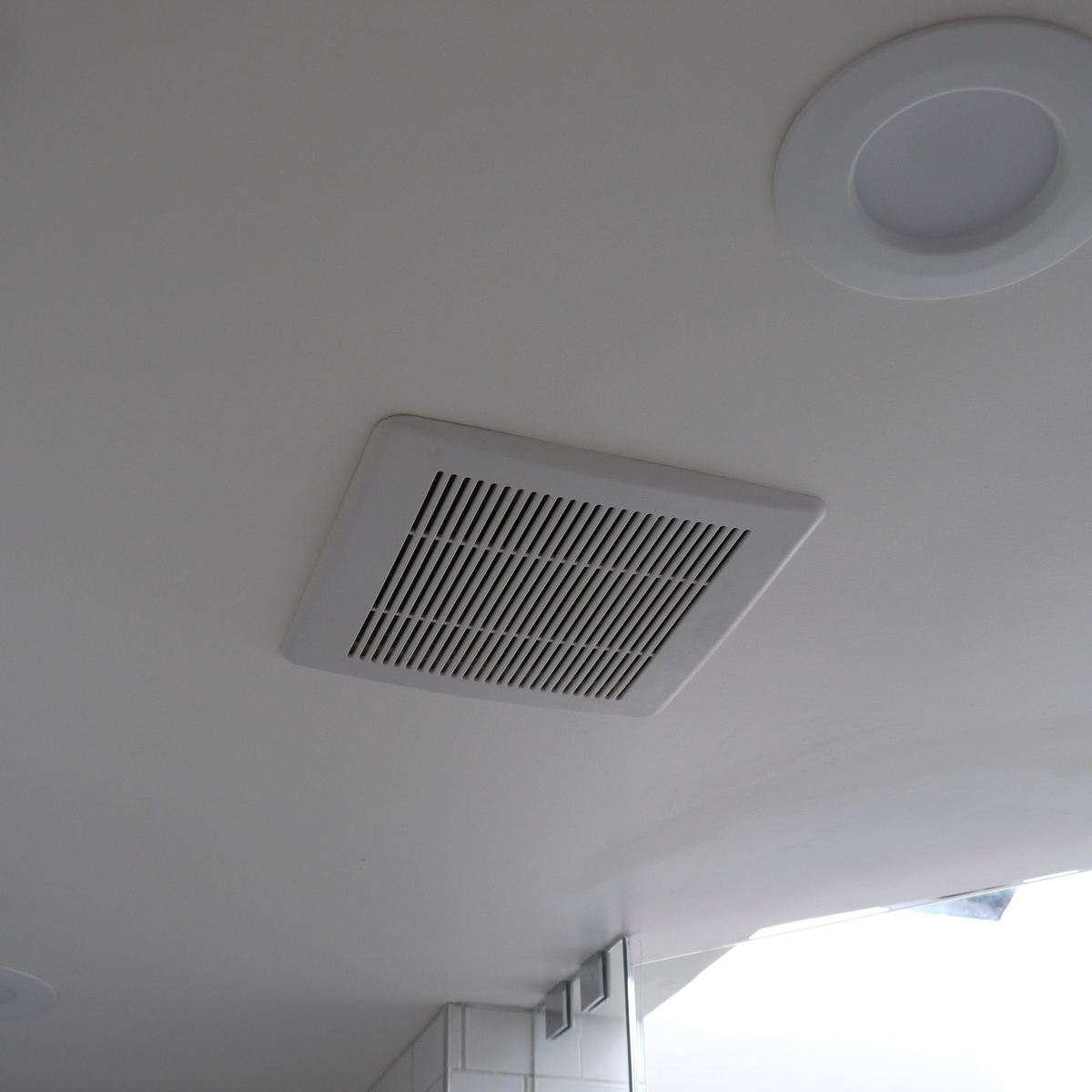
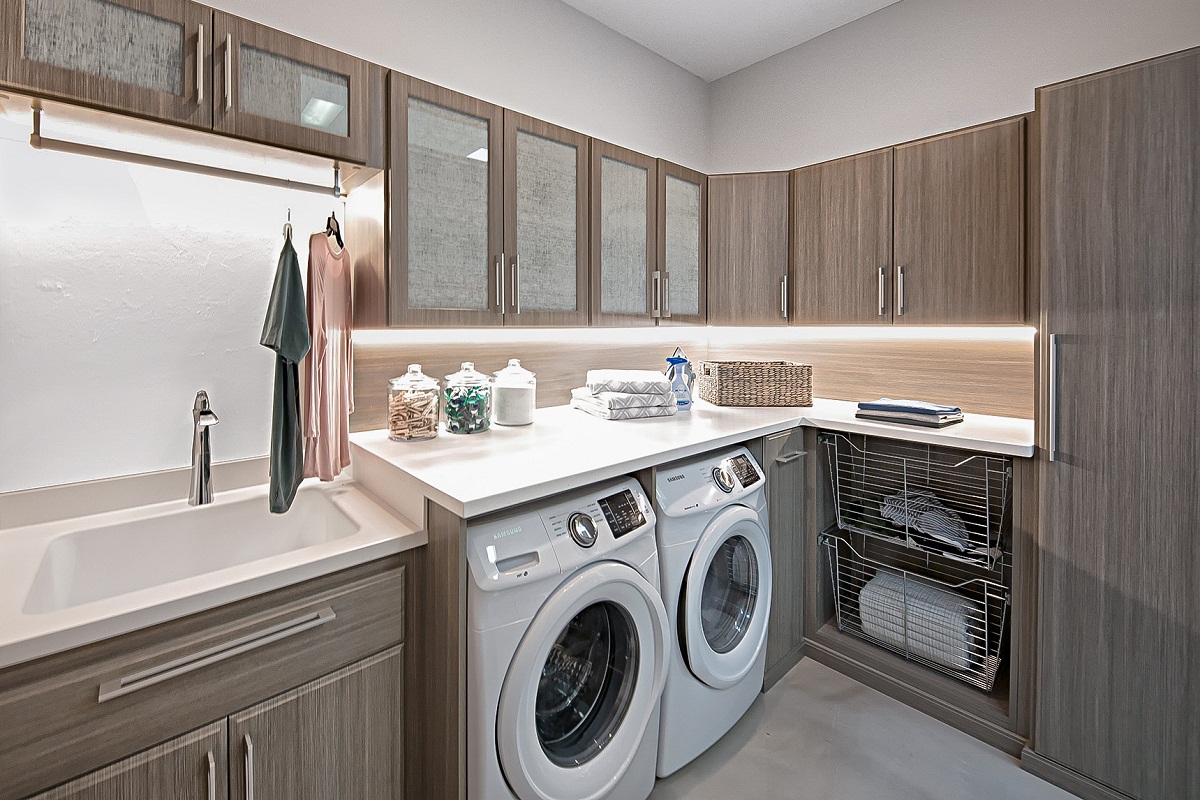


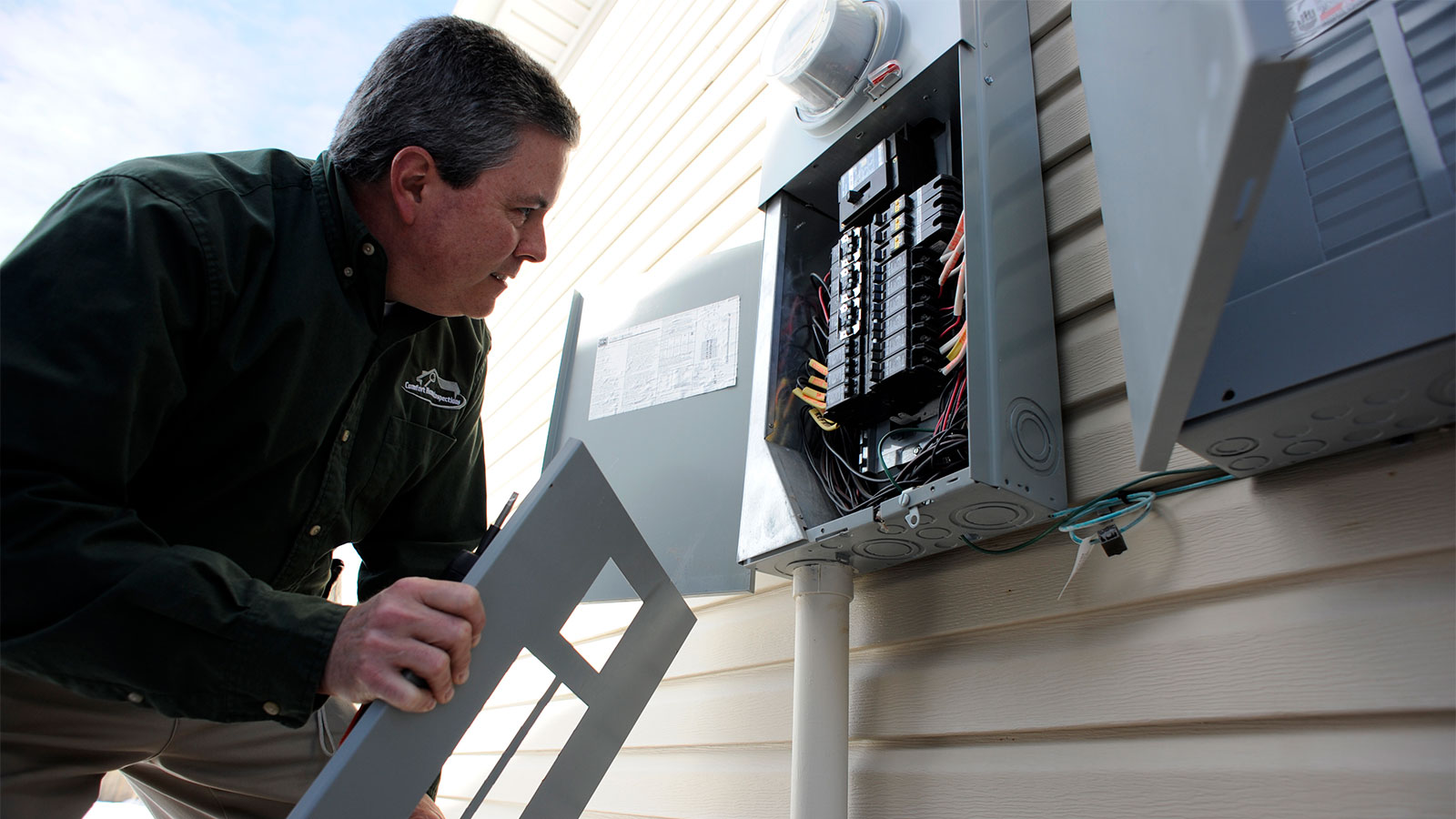

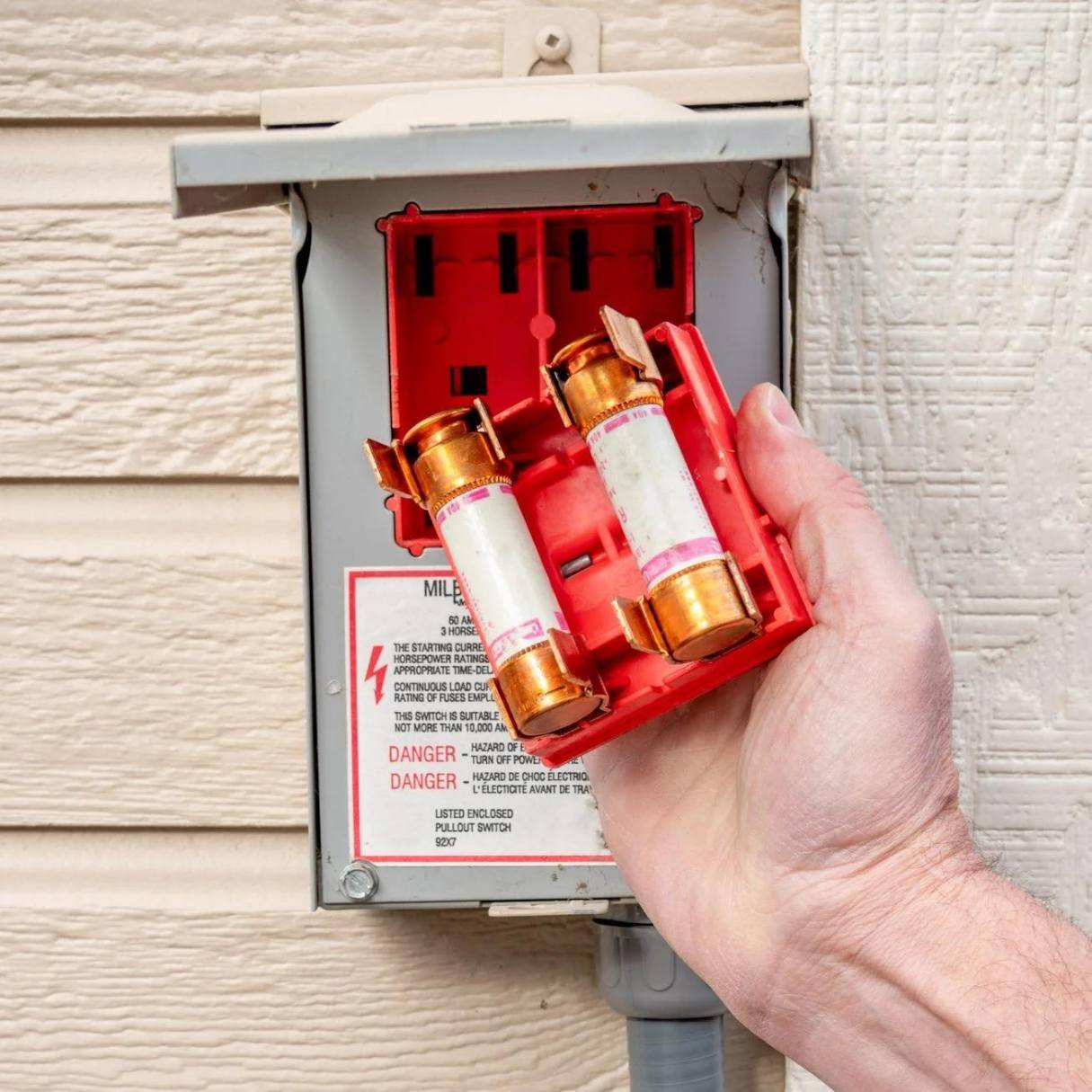


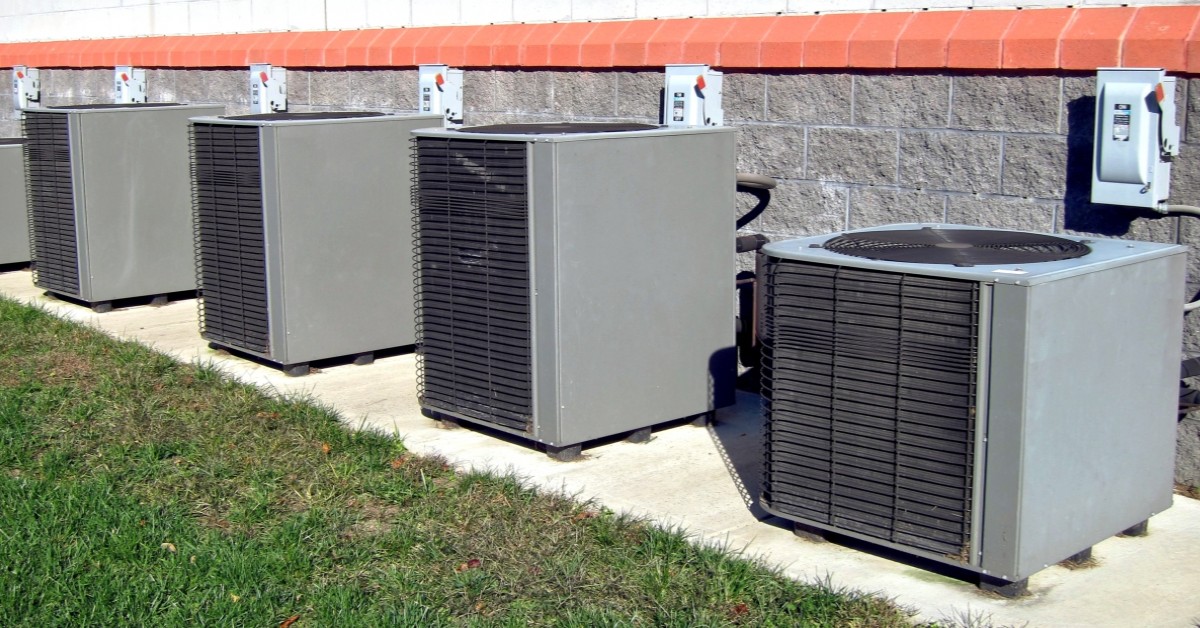
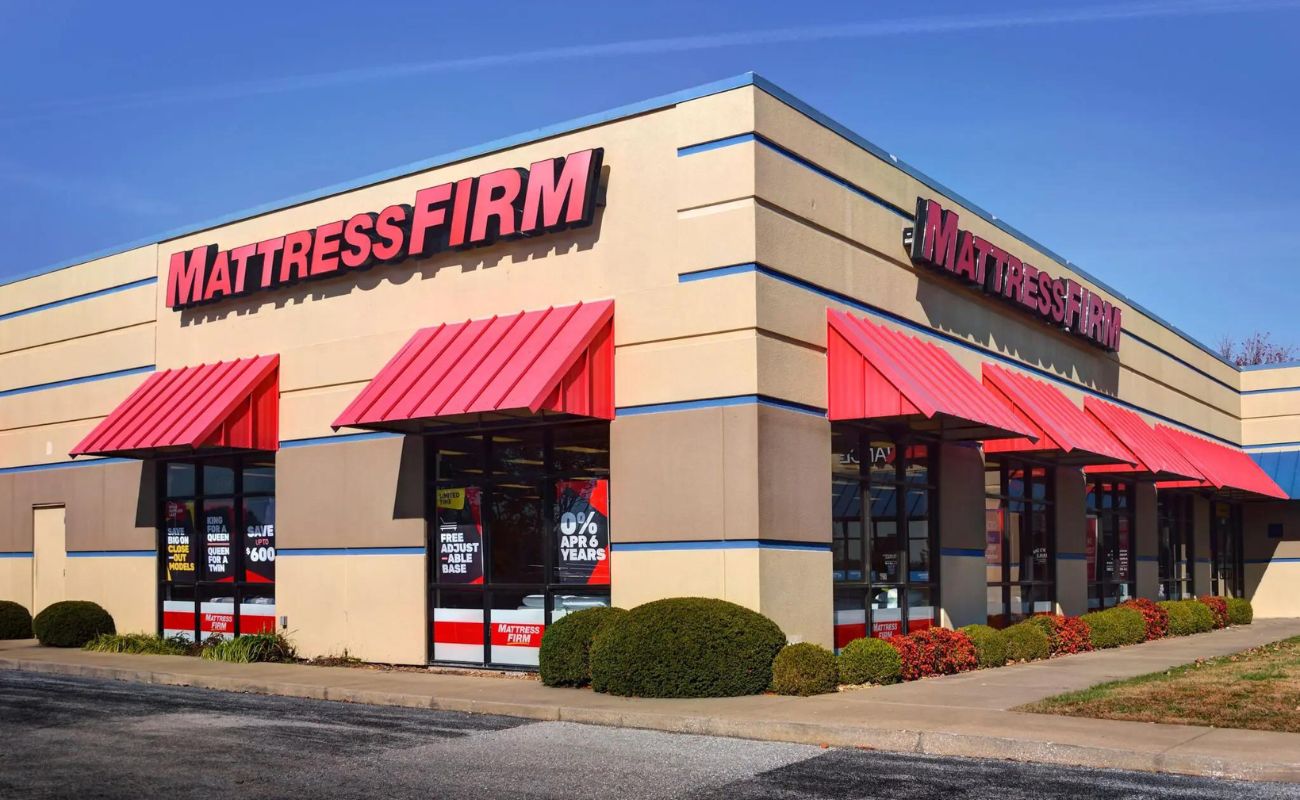

0 thoughts on “Where Should The Laundry Room Be Located”